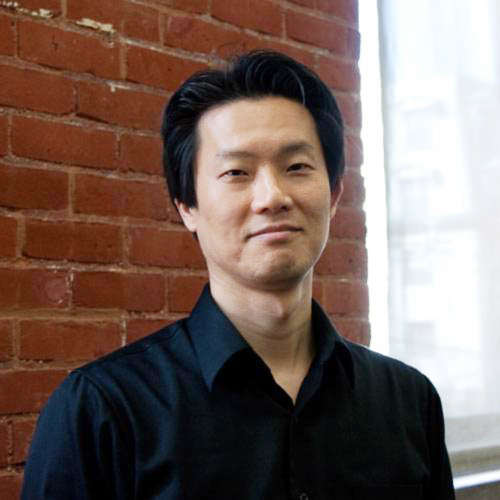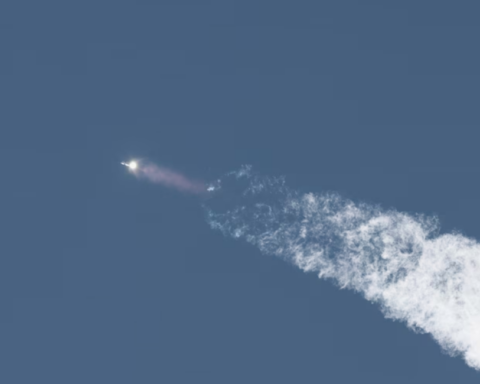 Dr. Eui-Hyeok Yang of the Department of Mechanical Engineering at Stevens Institute of Technology has commenced his term as Division Chair of the Microelectromechanical Systems (MEMS) Division in the American Society of Mechanical Engineers (ASME). In his new role, he will lead the division in efforts to foster collaboration and maintain a high level of creativity in the field; generate standards and guidelines for MEMS processes and technologies; disseminate information about ongoing developments in MEMS; provide a focal point for the Mechanical Engineers entering and practicing in the field; and train multi-disciplinary MEMS researchers to encourage the growth of the field.
Dr. Eui-Hyeok Yang of the Department of Mechanical Engineering at Stevens Institute of Technology has commenced his term as Division Chair of the Microelectromechanical Systems (MEMS) Division in the American Society of Mechanical Engineers (ASME). In his new role, he will lead the division in efforts to foster collaboration and maintain a high level of creativity in the field; generate standards and guidelines for MEMS processes and technologies; disseminate information about ongoing developments in MEMS; provide a focal point for the Mechanical Engineers entering and practicing in the field; and train multi-disciplinary MEMS researchers to encourage the growth of the field.
Micro-electro-mechanical systems research impacts a wide range of technologies that are vital to our society’s future, and Dr. Yang is helping to place Stevens at the forefront of MEMS innovation,” says Dr. Michael Bruno, Dean of the Charles V. Schaefer, Jr. School of Engineering. “This appointment is a recognition of Dr. Yang’s ongoing contributions to advancing the goals of the ASME MEMS Division and increasing the prominence and impact of the field.
Microelectromechanical Systems (MEMS) are miniature devices or arrays of devices combining electrical, mechanical, optical, chemical and/or biological components fabricated via integrated circuit or other similar manufacturing techniques. Research, insight, and then applications of MEMS shape the basis for the creation of technologies that impact areas as diverse as computing, information technology, biomedical technology, the environment, energy, transportation, robotics, manufacturing, deep space studies, and national security.
According to Dr. Frank Fisher, Interim Director of the Department of Mechanical Engineering, “Because of the different components that comprise MEMS, it is by its very nature a multi-disciplinary field. Dr. Yang is a prominent leader in the field, having driven forward successful, innovative solutions with researchers across various disciplines on numerous grants and publications.”
Dr. Yang has had a long and productive involvement with ASME and the MEMS Division. As a representative organization for an inherently multi-disciplinary field, the MEMS division has coordinated closely with other ASME divisions, including Dynamic Systems and Controls, Heat Transfer, Fluids Engineering, Applied Mechanics, Bioengineering, Design Engineering, Electronic and Photonic Packaging, Manufacturing Engineering, etc. in order to organize and realize the International Mechanical Engineering Congress and Exhibition. Dr. Yang has been involved in organizing tracks, topics and sessions in support of the IMECE. In particular, he served as Track Chair for the Micro and Nano Systems Track of the IMECE in 2009, 2010 and 2011. The Micro and Nano Systems Track consists of approximately 50 sessions and over 250 presentations related to advances in Nano and Micro Systems.
As MEMS Division Chair, Dr. Yang will lead the division in collaborative efforts associated with the International Technical Conference and Exhibition on Packaging and Integration of Electronic and Photonic Microsystems (InterPACK). As the flagship conference of the ASME Electronic and Photonic Packaging Division, Interpack is the premier international forum for exchange of state-of-the-art knowledge in research, development, manufacturing, and applications of electronic packaging, MEMS, and NEMS.
Dr. Yang is currently PI on a number of grants from AFOSR, NSF, NASA, SBIR, and US Army ARDEC. He directs the Micro Device Laboratory (MDL), a Stevens’s multi-user facility. He is also an Associate Editor and/or a Member of Editorial Board of several journals including IEEE Sensors.
ASME is a not-for-profit membership organization that enables collaboration, knowledge sharing, career enrichment, and skills development across all engineering disciplines, toward a goal of helping the global engineering community develop solutions to benefit lives and livelihoods. It was founded in 1880 by prominent mechanical engineers and leading industrialists. Robert H. Thurston, the first professor of mechanical engineering at Stevens Institute of Technology, became the first president of ASME. Thurston gained an international reputation for refocusing the discipline as an applied science.
ASME has grown through the decades to include more than 130,000 members in 158 countries, thirty-thousand of which are students. From college students and early-career engineers to project managers, corporate executives, researchers and academic leaders, ASME’s members are as diverse as the engineering community itself. ASME serves this wide-ranging technical community through quality programs in continuing education, training and professional development, codes and standards, research, conferences and publications, government relations and other forms of outreach.





